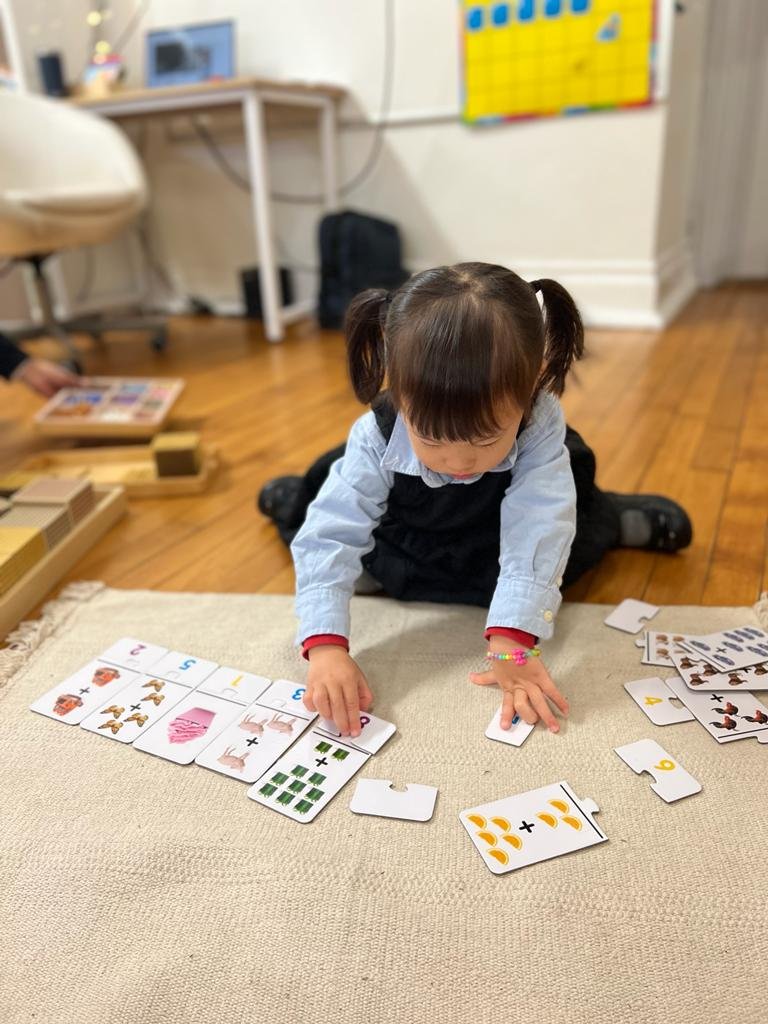We've opened up spots to book in-person tours!
Kindergarten
The greatest sign of success for a teacher... is to be able to say,
“The children are now working as if I did not exist.”
Maria Montessori believed that the best time to teach a child how to read was between the ages of 4 and 6 – well below the expected norm of 7 or 8 today. She developed and adopted methods and materials to this end and discovered that the process was much faster and more thorough when children learn to read by writing first. In other words, they are re-creating the material for themselves and making it their own. Children are allowed to go through an “invented spelling” stage as they develop their own awareness of the relationship between the spoken sounds and the written letters.
Early reading and writing are but two aspects of our Montessori program, albeit very important ones. These skills form the basis for all subsequent learning – even math has its word problems. And before anyone gets too caught up in IQ scores, let’s not forget that IQ tests are first and foremost tests of reading ability.
Dr. Montessori developed what she called a “sensorial” approach to teaching children. They were not expected to sit quietly at desks for hours at a time, but were given the freedom to explore in an enriched learning environment. All the senses were involved in hands-on learning.
For example, tools used in a Montessori classroom to teach reading include sandpaper letters and numbers so a child is able to get tactile feedback in tracing their shapes. Letters made of wood, fabric and other material give the child different options to keep their interest. And, of course, lots of material is provided to enable a child to write. The reading material is carefully selected to ensure the child builds confidence by achievement.
The Montessori math program follows the same approach and is designed with lots of material for the children to handle to develop their sense of numbers, of size, of proportions, of quantity, of shape, and of the basic math operations of adding, subtracting, multiplying and dividing. Beads and wooden blocks are used so a child fully understands the concepts of numbers and the decimal system, as well as the basics of the fundamental arithmetic operations of adding, subtracting, multiplying and dividing.
Metal and wood “pie” sections teach the concept of fractions. A simple abacus is used to develop their concept of calculation. And the children are given plenty of practice so they can master this vital subject.
Other material you will find in our Montessori classroom include large maps and map puzzles; jigsaw puzzles of varying levels; colour blocks to develop a child’s sense and knowledge of colour; scent bottles for identifying odours; games to improve motor and intellectual skills; different fasteners to teach children how to tie shoes, button shirts, fasten buckles; animal models to expose them to the natural world; and much more.
Our Montessori classroom is so different from the average classroom that we invite parents (and their children!) to experience it for themselves. Just give us a call to arrange a time for your visit.
Testimonials
"I love the experience at Alive Montessori school. My daughter is doing so well. She gets the benefit of a safe environment for which I am truly grateful."
[C.W.]
"We are so blessed to have met you! Thank you for welcoming us to your school and family and helping with our move to Canada. Max has grown so much in his time at Alive and we know this has been a wonderful foundation for his future. We will miss you!"
[O.M.]
My son was attending Alive Montessori last year, I couldn't be happier. The staff was amazing. I highly recommend the school!!!
We miss you guys!
[C.G.]



